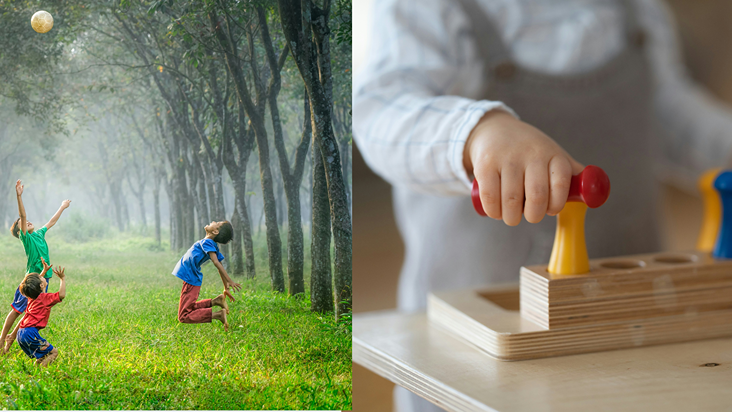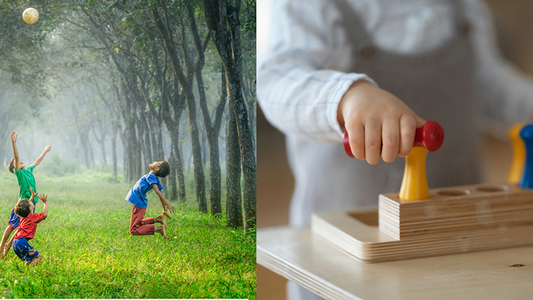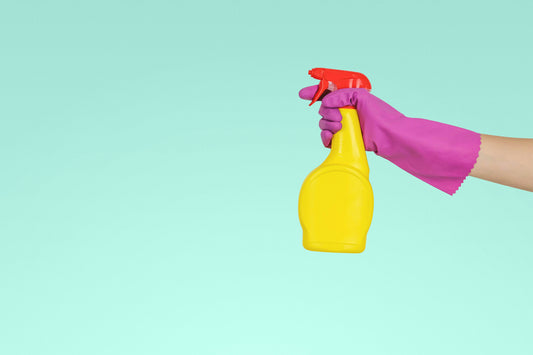In the world of early childhood education, two prominent methodologies stand out for their unique philosophies and approaches: Montessori and Reggio Emilia.
While both prioritize child-centered learning and holistic development, they differ in their principles, practices, and pedagogical approaches. Let's delve into the differences between Montessori and Reggio and explore why high sensory wooden toys play a crucial role in child development.
Montessori Approach:
The Montessori approach, developed by Dr. Maria Montessori, emphasizes independence, self-directed learning, and hands-on exploration. In Montessori classrooms, children are given freedom within structured environments to choose their activities and work at their own pace. The curriculum is based on the principles of observation, individualized instruction, and the use of specially designed materials that promote sensory exploration and skill development.
Reggio Emilia Approach:
In contrast, the Reggio Emilia approach originated in the town of Reggio Emilia, Italy, and is characterized by its emphasis on collaboration, creativity, and community involvement. Reggio-inspired classrooms prioritize the arts, nature, and project-based learning, encouraging children to express themselves through various mediums and engage in meaningful, real-world experiences. Teachers act as facilitators and co-learners, guiding children's inquiries and investigations while fostering a sense of wonder and curiosity.
Differences in Approach:
While both Montessori and Reggio approaches share common goals of nurturing independent thinkers and lifelong learners, they differ in their methods and focus areas. Montessori tends to emphasize individualized instruction, structured environments, and the use of specific learning materials, while Reggio values collaborative learning, child-led projects, and the integration of the arts and nature into the curriculum.
The Importance of High Sensory Wooden Toys:
Regardless of the educational approach chosen, highly sensory wooden toys play a vital role in child development. These toys stimulate the senses, encourage exploration, and promote cognitive, physical, and emotional growth in young children. Unlike plastic toys, which can be overstimulating and lack durability, wooden toys offer a more tactile and sensory-rich experience, allowing children to engage in open-ended play and develop fine motor skills, creativity, and problem-solving abilities.
Wooden toys also have environmental and aesthetic benefits, as they are often made from sustainable materials and blend seamlessly into home environments. Their timeless design and natural appeal make them ideal for promoting imaginative play, fostering a connection to nature, and creating a calming and nurturing atmosphere for children to thrive in.
In conclusion, while Montessori and Reggio approaches offer distinct perspectives on early childhood education, both recognize the importance of providing children with opportunities for sensory exploration, hands-on learning, and creative expression. High sensory wooden toys serve as valuable tools in supporting child development, encouraging curiosity, and inspiring a lifelong love of learning. Whether you're a Montessori purist, a Reggio enthusiast, or somewhere in between, incorporating these timeless toys into your child's play environment can enrich their educational experience and foster holistic growth and development.Sensory wooden toys offer children a rich and tactile experience that engages their senses and promotes holistic development.
In essence, highly sensory wooden toys are perfectly suited to the Montessori and Reggio Emilia approaches, providing children with opportunities for sensory exploration, open-ended exploration, connection to nature, development of fine motor skills, concentration and focus, and a sense of longevity and timelessness.




